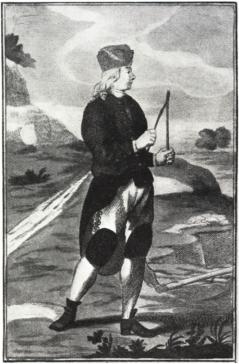Generations of historians of science have engaged with the notion of “tacit knowledge” in scientific change. However, they either deny the usefulness of this concept altogether or their investigations more or less imply that great achievements of individual scientists remain to certain degree a secret which is stored in this mythical tacit knowledge. In his own research on a major scientific change in early Victorian England H. Otto Sibum drew attention to scientific practices and the notion of embodiment of knowledge. With the introduction of the concept of “gestural knowledge”—a concept that aims at overcoming the mind-body dichotomy and to describe a working knowledge that reaches beyond the literary tradition of the past by using enactments of past experimental performances of scientific work—H. Otto Sibum pushed this research to a new level. Most importantly with the historical reconstruction of gestural knowledge he was able to acknowledge the singularity of a past researcher’s scientific knowledge. Moreover, Sibum could reveal the so-called tacit dimensions as hitherto unrecognised cultural repertoires of knowledge communities merging together and creating a singular stance of the past researcher that allowed him to achieve outstanding contributions in science. These findings have led not only to rethinking the meaning of tacit knowledge but also to look anew at the relation between knowledge and science. In particular the role of traditional knowledge in science and the historically changing demarcation practices that were employed to distinguish between knowledge and science require further investigation.
The project drew substantially on this historical and epistemological inquiry of embodied knowledge, but in a new field of research, i.e., the history of dowsing. Since the seventeenth century dowsers have been known as the main experts in the German mining industry. Their practices of collecting data about the Earth’s mineral resources and water drainages were part of the dowsers embodied knowledge. According to the records these specially skilled persons were able to detect hidden minerals and water drainages in the earth by either employing wooden sticks of a certain shape or their mere hands. Furthermore, in the seventeenth century at the Freiberg Mining Academy dowsers had to pass formal examinations before they became employed at the mining companies. In fact, their knowledge was of such a high esteem that this profession gained the highest status within that community. However, during the centuries this way of knowing spread throughout the countries but, most remarkably, over time it underwent dramatic changes: during the enlightenment it became, for example, discarded as the "devil's incarnation." In the early twentieth century, physicists suggested to investigate it through state funded means. Archival documents about this practical knowledge, its changing credibility over time and the often secret scientific investigation of this technique by leading natural scientists until today provides an important resource for investigating the notion of embodiment of knowledge and the difficulties in demarcating science from knowledge in history.

